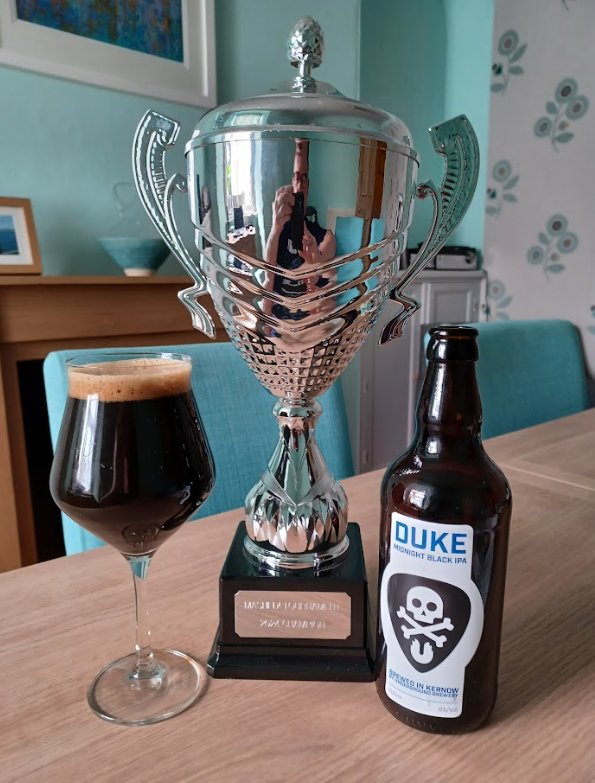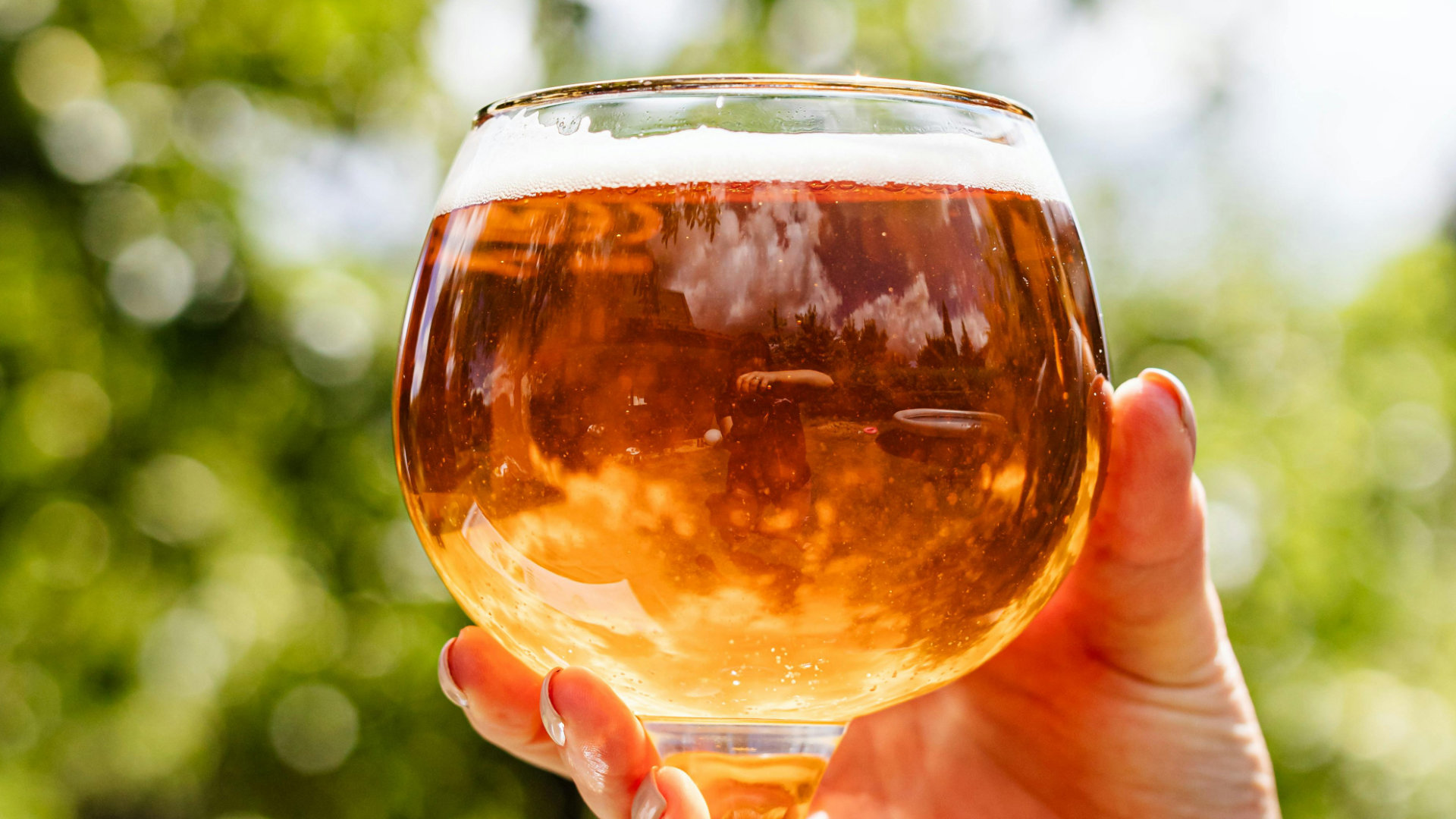Black IPAs are an intriguing beer style that I enjoy drinking, so I was interested to research and design a recipe and attempt a brew. ‘Duke’ was my second attempt. The original version was too harsh (unpleasant ‘hop burn’ in the back of the throat), so for the re-brew I dialled back the recipe a little and was careful during the hopping process.
The beer was brewed specifically for the MASHED tournament, created to be ready just in time. When I sampled it prior to dispatching, I thought it tasted good but never imagined that it would do so well. Whilst I had hope (I had jokingly posted cryptically on Facebook during my train journey from Penzance to Aberystwyth that “Destiny awaits, maybe. Nothing ventured, nothing gained.â€), I had no real expectations and was content to just get through the first round. So progressing further and winning was surreal. Tasting the beer during the rounds (a small amount leftover in a bottle after judging), it had conditioned well and improved since bottling, which was pleasing.
It was a great tournament and weekend and receiving the trophy was a proud moment. It was also nice to meet Gareth & Yohanna and the other brewers, including to celebrate with a few beers later during the evening. Everybody was friendly, despite the competition, and was a real pleasure to attend, so thank you to all for making it so enjoyable.
I might re-brew Duke, but to date have never brewed the same beer twice. Rather, my attention has now shifted to researching and deciding what to brew for next year’s tournament. As Champ, the pressure’s on! Also, what shiny new equipment (as an upgrade) to spend my tournament winnings on at darkfarm.co.uk.

The Making of a Duke
In line with the style, my brew featured hops bitterness and aroma alongside a dark malt flavour. Maris Otter and Munich (plus oat and wheat) malts provided a base, with Caraffa III (roastiness but reduced astringency), Rye and Crystal Rye malts (earthiness) for further complexity. Also, Midnight Wheat malt for sheer depth of colour (the aim being opaque black, again with reduced astringency). All aimed at providing desired toffee/caramel and chocolate/ coffee flavours. On tasting, I got a restrained and pleasant liquorice flavour too. For hops, Target provided a bittering base, while Galaxy and Azacca displayed tropical and pine notes. Subtle fruitiness was also present as a product of ester development, presumably from the yeast used. On pouring (observed during the tournament rounds), Duke retained a good head, aided by the addition of the torrified wheat, while the flaked barley and oat additions resulted in a medium mouthfeel. At 6% ABV, there was also a gentle warmth from the alcohol.
The Branding
The beer name ‘Duke’ combines the Cornish word for black, ‘Du’, with the first two letters of Kernow - the old, but still in popular use, name for Cornwall, where I live and brew - ‘Ke’. In common with all my labelling, which generally has a skull theme - much to the amusement/bemusement of family and friends - my logo includes a skull and crossed bones, along with a U-shaped hop (standing for Underground Brewery, which is the name of the non-commercial brewery that I attribute my amateur brewing efforts to), set within a guitar pic/plectrum outline (I’m a big rock/metal fan and dabble with a bit of guitar playing).
BREW BACKGROUND
I’ve been homebrewing for over 10 years. I dabbled with brewing a few beer kits in the 1990’s. The beers were OK but nothing special, and at the time I didn’t get hooked. But about 10 years ago my wife bought me a new plastic fermenter and some other gear plus a basic beer kit as a birthday gift that kick-started a renewed interest. I made a few nice beers from kits and then moved on to extract brewing which was an improvement. Striving for even better quality, I made the change to all-grain brewing. I like reading around the subject of brewing, so my processes are continuing to steadily evolve and improve at my pace as I learn more. Scott Janish’s ‘The New IPA’ book, which along with John Palmer’s book ‘Water: A Comprehensive Guide for Brewers’ has been a game changer for me. Both were very thought-provoking and well worth acquiring.











